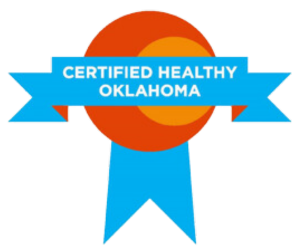TULSA, OK – [January 23, 2013] – Underage drinking is a growing problem in Oklahoma, especially among females.
A new report by the Centers for Disease Control and Prevention claims one in five high school girls binge drink. The report indicates nearly 14 million women in the United States binge drink about three times a month.
Binge drinking is defined as five or more alcoholic drinks in a row for males and four drinks for females. “Underage alcohol consumption is a statewide problem and new evidence is showing a greater risk to young women,” said Marianne Long, Tulsa Health Department director of regional prevention. CDC alcohol consumption patterns revealed that 12.6 % of Tulsa County women of child bearing age admit to binge drinking. About twice as many men than women binge drink, but the health risks are different for women and the dangers of their behavior draw less attention.
Women process alcohol differently than men and tend to be smaller. Women are more susceptible to the harms of alcohol at lower levels of drinking. Binge drinking can increase a woman’s risk of breast cancer, heart disease, unintentional pregnancy, sexually transmitted diseases, and auto accidents. “Binge drinking is an important and under-recognized women’s health issue, said Dr. Thomas Frieden, CDC director. “Of the estimated 23,000 annual deaths attributed to excessive alcohol use among women and girls, binge drinking was responsible for more than half of those deaths.”
According to the Oklahoma Prevention Needs Assessment in 2010, 28% of 12th graders in Tulsa County admitted to binge drinking within two weeks prior to the assessment. Of the sixth graders participating in the survey, 9.5% reported engaging in binge drinking. In addition, 16.4% of Tulsa County seniors also claimed they had driven a car after drinking. “In Tulsa County we have found underage drinking to be the greatest risk to the community,” said Long. “This evidence heightens the importance of community awareness on the dangers of binge drinking.”
According to the CDC, the same scientifically proven strategies for communities and clinical settings that we know can prevent binge drinking in the overall population can also work to prevent binge drinking among women and girls.
Funded by the Oklahoma Department of Mental Health and Substance Abuse Services, the Tulsa Health Department Regional Prevention Coordinators (RPC) works to promote drug and alcohol abuse prevention, with current priorities centered on underage drinking, adult binge drinking, and the non-medical use of painkillers within Tulsa County. The work of RPC is concentrated on population-level change in Tulsa County by assisting communities in determining the substance abuse problems affecting their constituents and the most effective strategies to address these problems.
RPC works with local coalitions and stakeholders to gather data, track trends, and provide training and technical assistance within the community. In addition, RPC provides support for town hall meetings and assists with local alcohol compliance operations.






